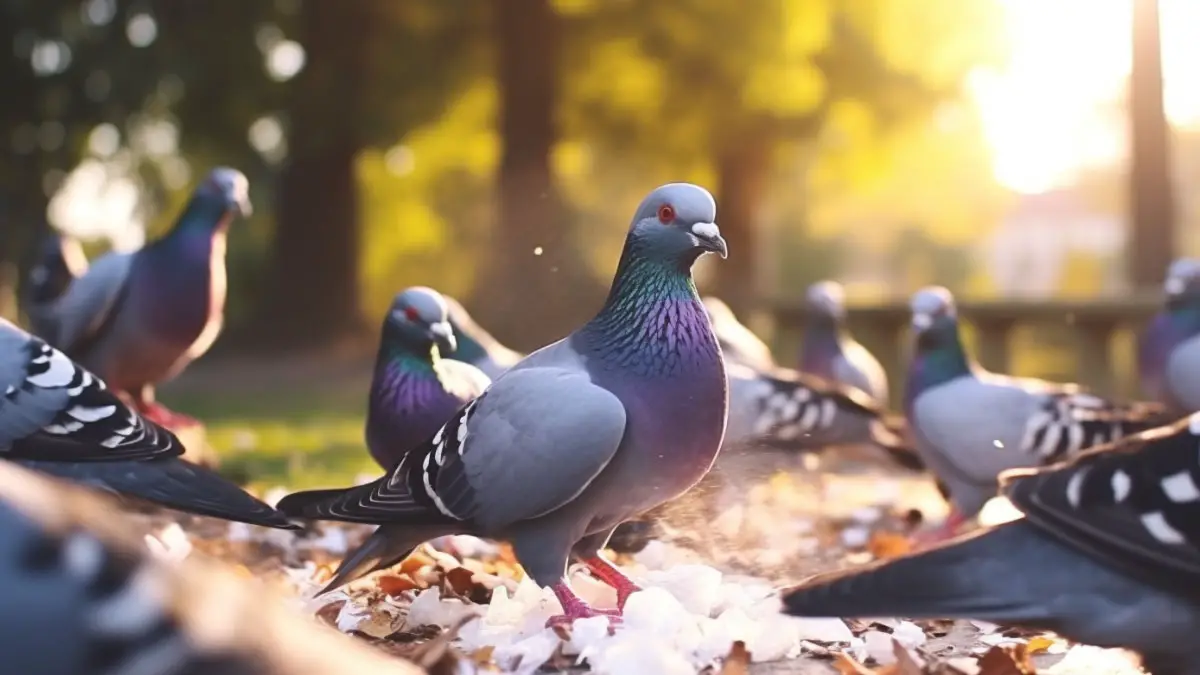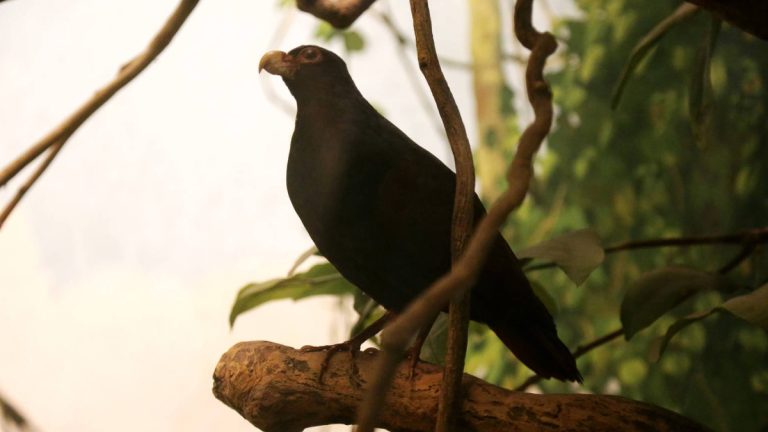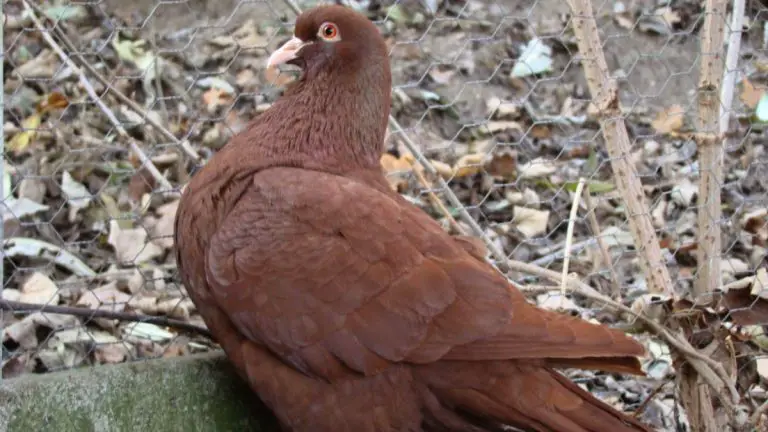6 Racing Pigeon Breeds and Types – A Complete List
Racing pigeons are popular among pigeon enthusiasts due to their remarkable speed, endurance, and navigational abilities. However, what most people don’t know is that these special birds have been selectively bred for centuries. This has enabled the breeders to bring out the finest breeds that excel in the demanding pigeon racing sport.
Over time, there has been a diverse variety of breeds and types of pigeons that participate in pigeon racing competitions.
Whether you’re a pigeon fancier or new to the pigeon racing sport, this article will guide you through various racing pigeon breeds and types. We’ll explore their unique characteristics, racing capabilities, and other helpful info you need to know about these remarkable birds.
Racing Pigeon Breeds and Types
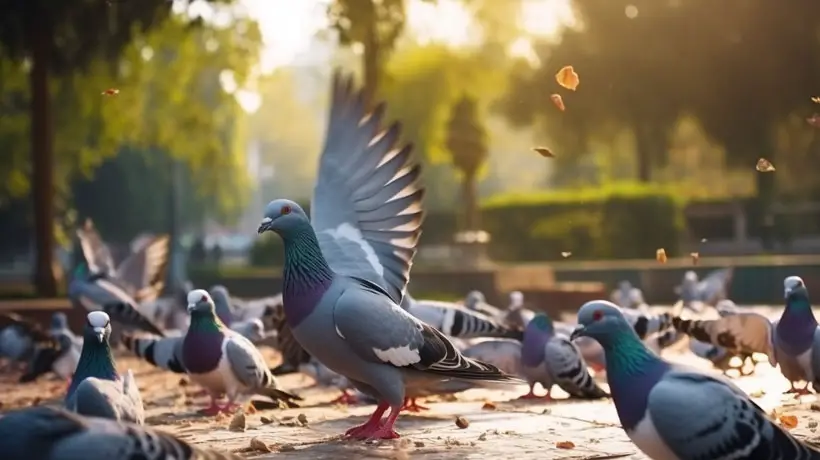
Below is our complication of some of the most common breeds and types of racing pigeon breeds in the US. Let’s start with the different types of racing pigeons:
1. Homing pigeons
Homing pigeons, also known as mail pigeons or messenger pigeons, form the foundation of pigeon racing.
These birds have been selectively bred for centuries due to their innate ability to navigate and easily find their way home over long distances.
Their remarkable navigational skills and homing instincts have been harnessed for various purposes such as carrying messages during war times and participating in competitive pigeon races.
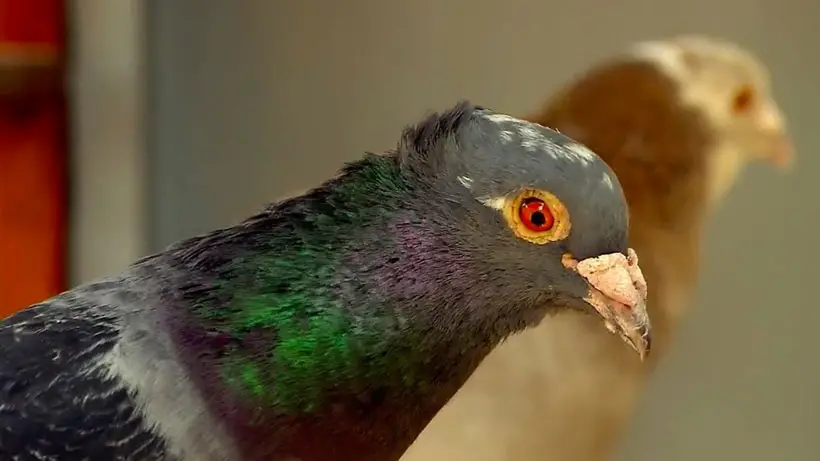
They possess a strong sense of direction, which is aided by cues such as the earth’s magnetic field, the sun’s position, their keen visual, and their olfactory senses to help guide them home.
In the pigeon racing world, the homers are highly valued due to their reliability and insurability.
They excel in long-distance races and can cover hundreds of miles, and eventually return to their lofts with exceptional accuracy.
Note that these pigeons usually undergo rigorous training and their performance usually depends on a variety of factors such as overall health, training methods, and weather conditions.
Some of the common homing pigeon breeds include:
- Exhibition Blue Bar Homer
- Belgian postal Pigeon
2. Racing Homers
Racing homers are a special strain of homing pigeons and the true stars when it comes to pigeon racing.
These birds are specially bred for speed, endurance, and exceptional homing instinct—making them a standard option for competitive pigeon racing events.
One of the key characteristics that set the racing homers apart from other pigeon breeds is that they’re sleek and streamlined.
They also have strong wings and well-developed flight muscles, which enable them to maintain high speeds over long distances.
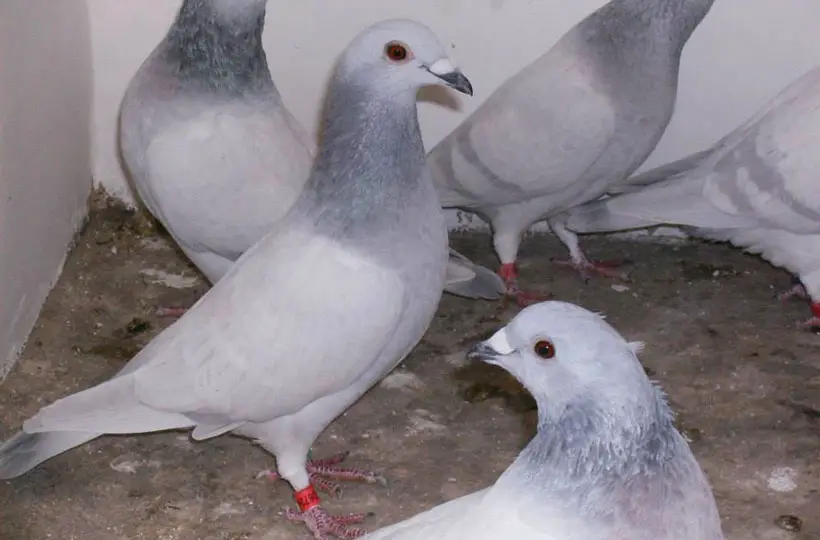
Thanks to their keen sense of direction and navigation, these birds can find their way back home with great precision.
When it comes to pigeon racing events, these homers usually participate in races that involve covering long distances—up to hundreds of miles.
During these races, the birds not only display their speed and stamina but also their handlers’ skill and strategy. The owners train them carefully and intensively to help hone their homing skills and physical fitness.
Some common strains of racing pigeons include:
- Aardens
- Sions
- Janssen pigeon
- Aelbrecht (De Rauw-Sablon)
- Cattrysse, Delbers, Buycks (white)
- Roosens, Schaerlaeckens
- South African Racing Pigeon
3. Roller Pigeons
The roller pigeons refer to a unique breed known for their extraordinary acrobatic flying skills.
They’re different from other breeds in that they’re primarily not meant for speed but for their ability to repeatedly make mid-air rolls or somersaults. This makes them truly unique in the world of pigeon fancying.
Roller pigeons have been bred to help them excel in somersaulting, a genetic trait that makes them roll backward during a flight. Some individuals are even able to do multiple rolls in quick succession.
During roller pigeon competitions, the judges assess these birds based on the precision and consistency of the rolls they make. Birds with more stylish and controlled rolls tend to score higher.
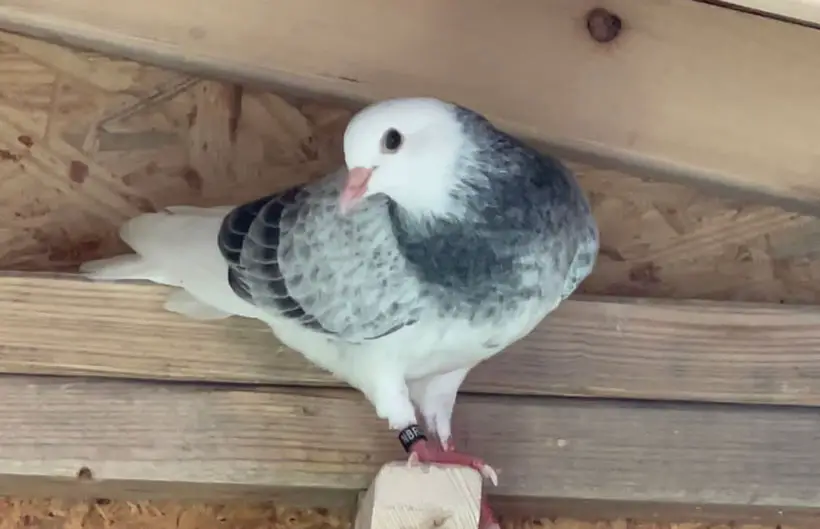
Some common breeds of roller pigeons include:
- Birmingham Roller
- Parlor Roller
- Dark Check Show Roller
- Oriental Roller
- Galatz Roller
4. Tumbler Pigeons
Tumbler pigeons are simply what they sound like; exceptional tumblers. They have the distinct capabilities to tumble or roll during flight.
These birds aren’t bred for speed and endurance but for the kill of performing mid-air acrobatics.
Just like the rollers, these pigeons have the unique ability to perform controlled flips or summersaults mid-air while in flight. Their tumbling can involve both forward and backward rolls.
In tumbler competitions, judges usually assess these birds based on their style, precision, and even consistency in performing the rolls. The best-executed rolls usually score higher.
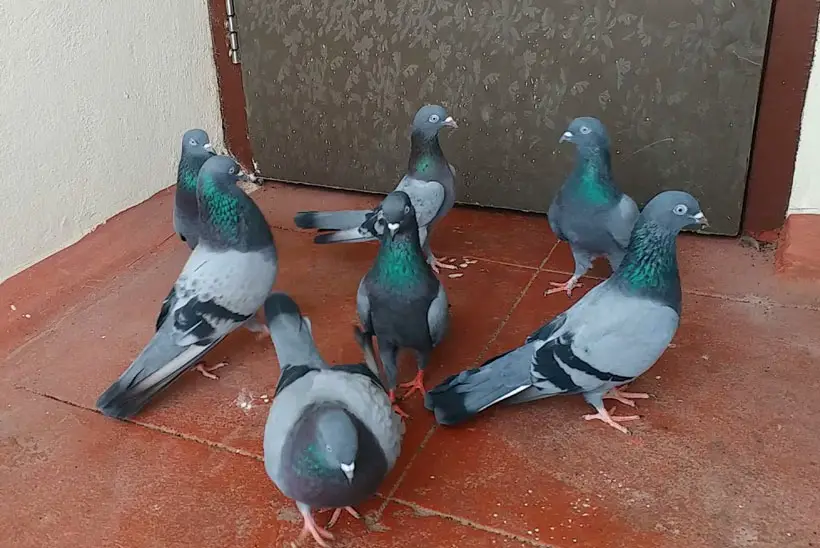
Some common breeds of tumbler pigeons include:
- American Flying Tumbler
- Armenian Tumbler
- Budapest Short-faced Tumbler
- Vienna long-faced tumbler
- Berlin Long-faced Tumbler
- Berlin Short-faced Tumbler
- Australian Saddleback Tumbler
- Australian Performing Tumbler, among others.
5. Sprint pigeons
As their name suggests, spring pigeons are bred specifically for short-distance racing which usually emphasizes speed over endurance.
The birds are finely tuned racing machines that make explosive bursts of speed and rapid flight.
Unlike long-distance racing pigeons that cover tens to hundreds of miles, sprint pigeons usually cover less distances of between 50 and 200 miles.
The races are intended to test the pigeons’ ability to quickly reach top speed and then maintain it over the short-distance runs.
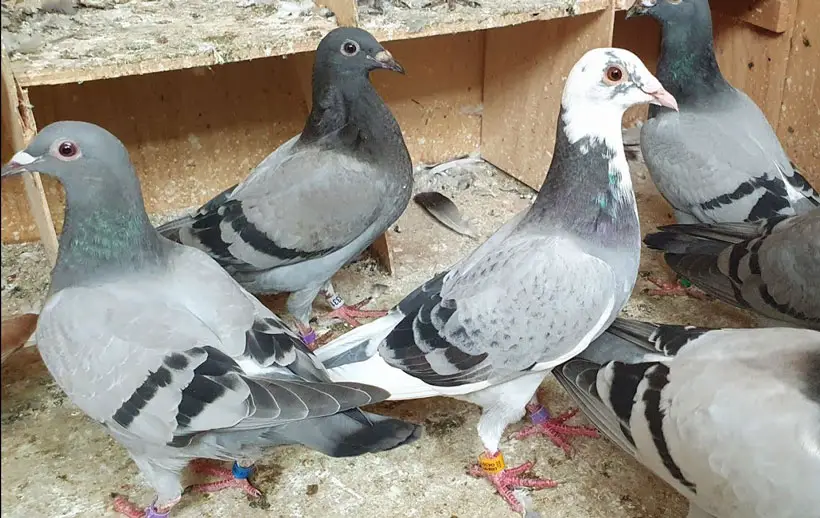
These pigeons have streamlined and aerodynamic bodies, powerful wing muscles, and sharp flexes.
This combination of unique features gives them the ability to rapidly accelerate when released and navigate to their home loft with precision.
6. Tipplers/ Tippler pigeons
Tipplers are a breed of pigeons widely recognized for their exceptional flying endurance.
They’re capable of staying afloat for extended periods of time, and even surpass the flight capabilities of many other breeds.
They get their name “tippler” from their tendency to tipple or tumble when descending after a long flight.
These birds are capable of staying airborne for close to 24 hours (to be precise, the longest ever recorded light was 22 hours). This shows how great stamina and navigational skills these birds have.
During racing competitions for tippler pigeons, the scores are awarded based on the light duration as well as the quality of tippling or tumbling performance when landing.
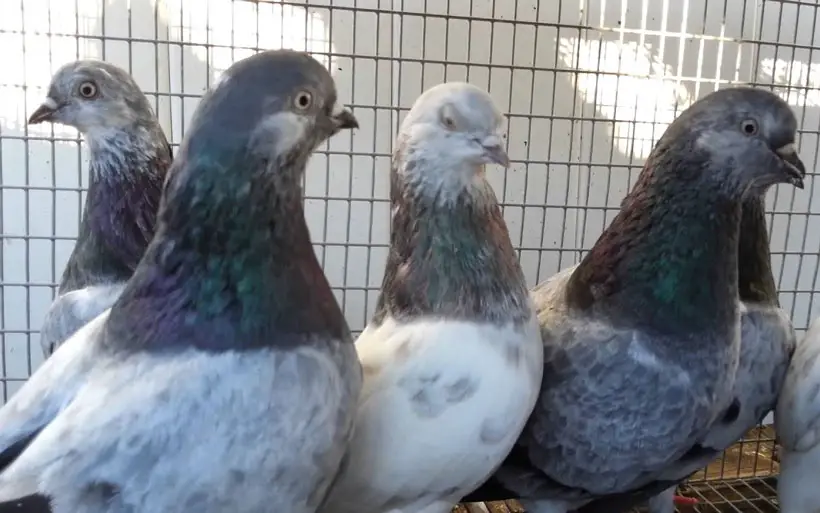
Common types of tippler pigeons include:
- Irish Blue Tipplers
- Gordon Hughes Tipplers
- Jack Boden Tipplers
- Lovatt Tipplers
- Macclesfield Tipplers
- Manchester Tipplers
- Sheffield Tipplers
Common Racing Pigeon Breeds:
Below, we have discussed some of the most common racing pigeon breeds today:
1. German Elster Pigeon
The German Elster pigeon is regarded as one of the fastest pigeon breeds in the world.
However, it’s also regarded as a decorative breed with two primary colors which can range from feathers on the chest to the plumage on the head.
These breeds have large but proportional bodies, long necks, and small heads. They also have medium wings, which cover their bodies pretty well, and quite a narrow tail.
Though the origin of these birds is still unclear, they’re excellent racers in high-speed competitions.

2. Damask Pigeon
The Damask pigeon is also known as the Damascus pigeon and traces its origins to Syria or Turkey.
This breed of racing pigeon is also beloved to have been known to the Egyptian Pharaoh thousands of years ago.
The dove is also commonly referred to as the dove of Jerusalem or the dove of Muhammad.
The bird gets its name “damask” from the fact that it was introduced to England from Damascus city.
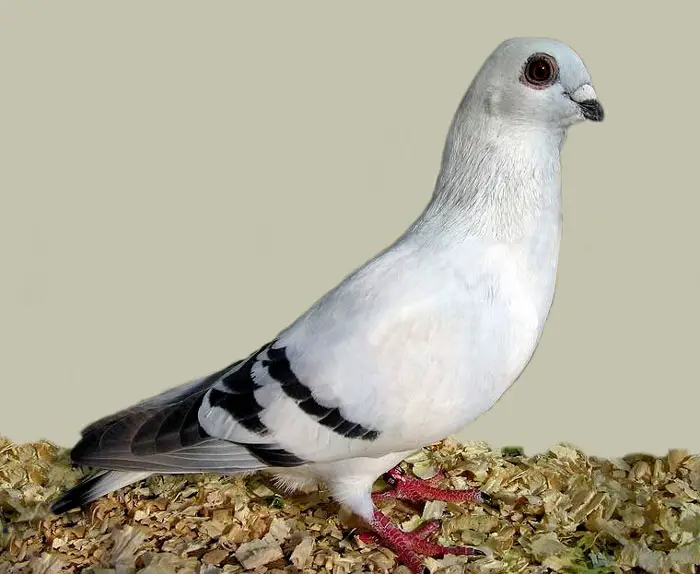
3. Tape Turman Pigeon
This racing pigeon traces its origin way back to the 17th century in the city of Rzhev and has been used in pigeon racing competitions for centuries.
While the color of these pigeons can vary, they all have a distinct ribbon tail that sets them apart from other breeds. These birds are also large and feature a faceted head plus a colorful body.
Varieties of this breed may come with a tuft or not and have proven to be great races—they can do it during the day or at night.
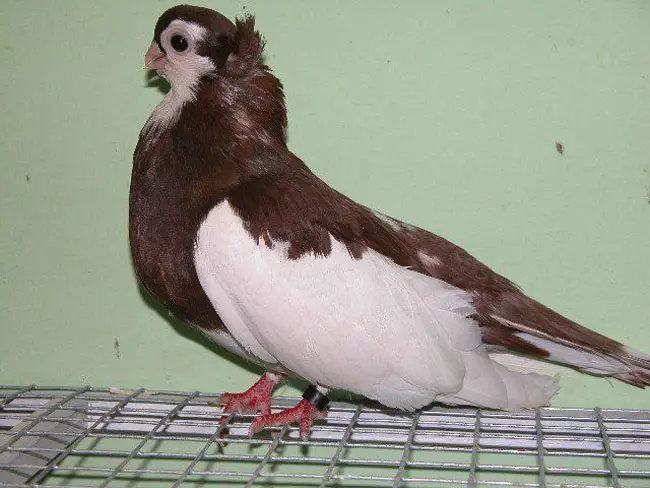
4. English Quarry Pigeon
The modern-day English quarry pigeon is a descendant of the Baghdad bearded and Asian quarry pigeons.
These descendants are also among the birds that were highly favored in ancient Persia.
The modern breed has a long and straight neck on top of a unique waxworm. The bird is pretty large and its long, thin body comes in a variety of shades and colors.
Among these many varieties, only 3 colors are approved for racing namely the black, white, and brownish-gray varieties.

5. Moscow Monk Pigeon
This breed of racing pigeon gets its name from its way of flight (it flies and feeds alone). It may also have gotten its name from its head color, which is similar to a hat.
The bird is usually white in color while its tail can be coffee, black, or yellow. Its head also features a small crest. Its plumage is dense and its body appears slightly sloping.
Moscow monk pigeon traces its origin back to Moscow, Russia, and is believed to have been developed back in the 20th century by crossing the Warsaw and Hamburg helmet breeds.
It has great flying skills, which makes it popular in flight competitions across the world.
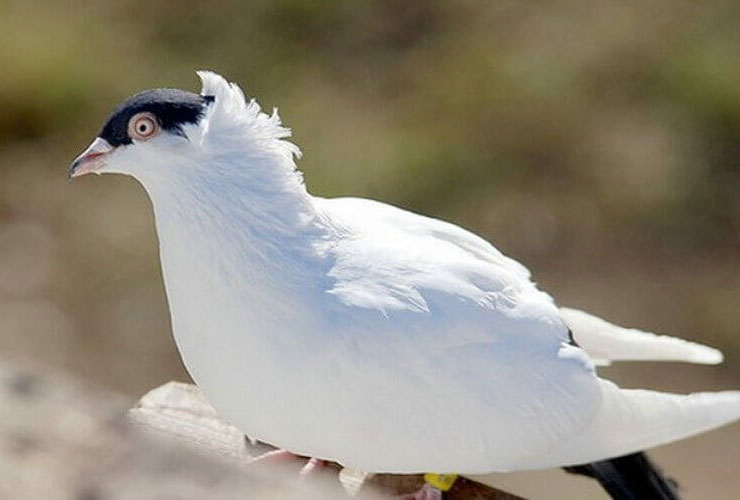
Conclusion
Racing pigeons have excellent flying capabilities and often participate in pigeon racing competitions across various parts of the globe. The most common types of pigeons used in racing competitions include the homers, racing homers, sprint pigeons, tumblers, tippler pigeons, and rollers.
The racing homers can stay airborne for close to 24 hours and are usually tested based on their speed, endurance, and homing instincts. Others like the sprint pigeons are intended for short bursts of flight over endurance while tumblers and rollers are fancied due to their ability to tumble and roll during flights. Which of these racing pigeon types and breeds is your favorite?
